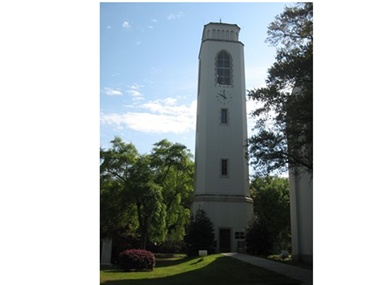
2015-04-08: Citadel
The Citadel was established in 1842 and was originally located on Marion Square in beautiful downtown Charleston, SC. Today the picturesque campus, which was moved in 1922 to the bank of the Ashley River, is home to 24 major buildings and over 3,400 men and women enrolled in over 20 full and part time graduate and undergraduate programs. If the truth be known, all I ever knew about The Citadel was that my friend's boyfriend went to school there! It is certainly a beautiful campus and it was fun watching all the freshman walking double time in their own lane from building to building.
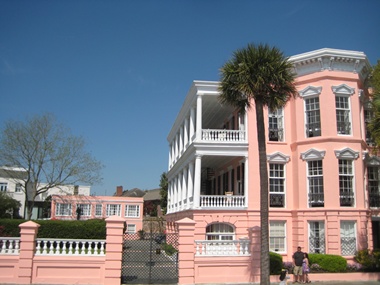
2015-04-08: Palmer Home
The Palmer Home, locally known as the Pink Palace, is one of the most famous houses in Charleston. This 18,000 square foot antebellum mansion was completed in 1849 by John Ravenel. His son, Doctor St. Julian Ravenel, designed the "Little David", the first semi-submersible vessel and the forerunner to the submarine. This private home is now operated by third-generation owner, Francess Palmer. The house is furnished and decorated with antiques that have been in the family dating back 200 years. With cookies and lemonade we stood on the veranda and marveled at the incredible view of the harbor.

2015-04-08: Waterfront Mansion
Another of the beautiful waterfront mansions.
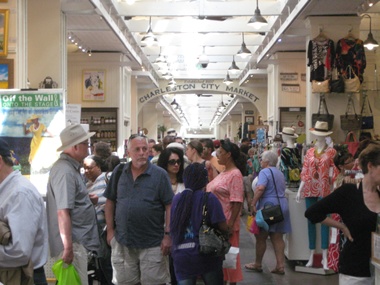
2015-04-08: Charleston City Market
In 1788, Charles Cotesworth Pinckney ceded land to the City of Charleston for the express use as a public market, and he stipulated that the land must remain in use as a market for perpetuity. To fulfill this requirement, the low buildings-sheds-that stretch from Market Hall to the waterfront were built between 1804 and the 1830s. These sheds originally housed meat, vegetable, and fish vendors. Since the 1970s, the original sheds and surrounding neighborhood have housed many small and unique shops.
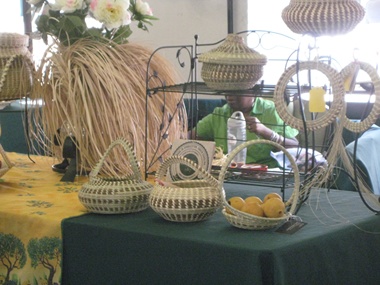
2015-04-08: Sweetgrass Baskets
One of the oldest handcrafts of African origin in the United States is the hand-woven winnowing sieve, a shallow basket that was used during the Colonial Era to separate the rice seed from its chaff. Made in Charleston from indigenous bulrush, a strong yet supple grass that thrives in the sandy soil of the coastal region, sweetgrass baskets are now among the nation's most prized cultural souvenirs. With more than 50 resident artists, the Charleston City Market is the very epicenter of sweetgrass basketry. Every hand crafted basket begins with a knot around which coils of bundled grass are woven.
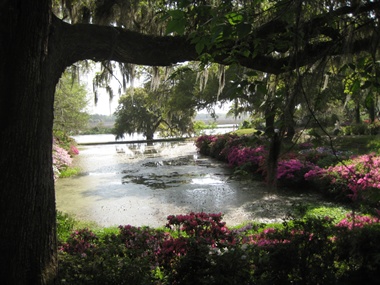
2015-04-09: Middleton Place
John Williams, an early South Carolina planter, probably began building Middleton Place in the late 1730s. His son-in-law Henry Middleton (1717-1784), who later served as President of the First Continental Congress, completed the house's main section and its north and south flankers, and began work on the elaborate gardens. Middleton's son, Arthur Middleton (1742-1787), a signer of Declaration of Independence, was born at Middleton Place, and lived at the plantation in the last years of his life.
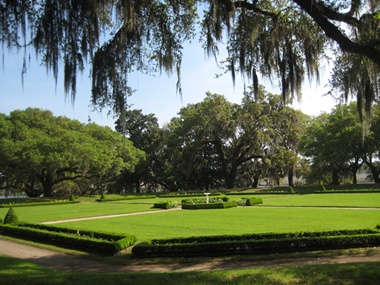
2015-04-09: Formal Garden
Toward the end of the Civil War, Union soldiers burned most of the house leaving only the south wing and gutted walls of the north wing and main house. The earthquake of 1886 toppled the walls of of the main house as well as the north wing. In 1916 a Middleton descendant John Smith and his wife Heningham began meticulously rebuilding the plantation's elaborate gardens. Although no house stands on the property, the gardens are the oldest landscaped gardens in the United States and tell the story of this rice growing family from long ago.
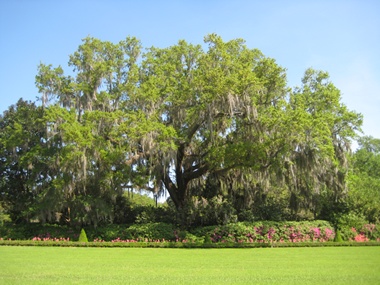
2015-04-09: Old Oak
If these old oak trees could talk, they would be able to tell us wonderful stories of days gone by in the South.

2015-04-09: 'Gator
One of the many alligators we saw swimming in the water of the plantations we visited in this area.
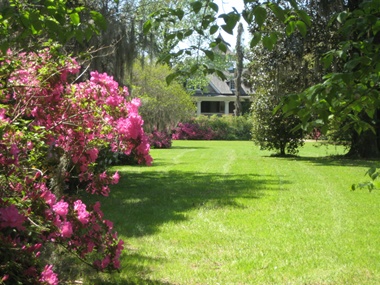
2015-04-09: Magnolia Plantation
The Magnolia plantation dates to 1676, when Thomas and Ann Drayton built a house and small formal garden on the site. (The plantation remains under the control of the Drayton family after 15 generations.) Magnolia was originally a rice plantation, with extensive earthworks of dams and dikes built in fields along the river for irrigating land for rice cultivation. African slaves from rice-growing regions created the works. As time went on, the slaves developed a creolized Gullah language and culture, retaining many elements from Africa. The outbreak of the Civil War would threaten the welfare of the family, house and gardens but the plantation would recover from the war to see additional growth of the gardens as they became the focus of the plantation over agriculture.